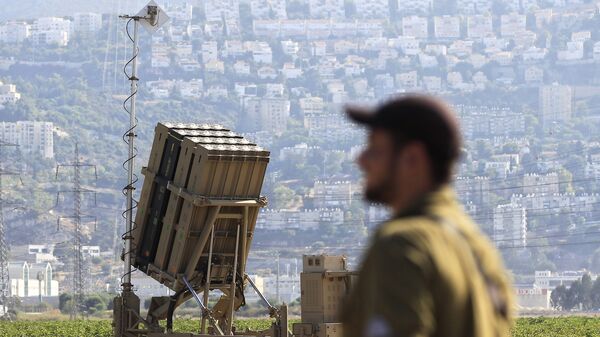Israel's missile defense system, the Iron Dome, has gone on display in Washington, DC at a three-day Association of the US Army (AUSA) meeting, a showcase of the latest radar technology and operational launchers.
The summit, which opened October 9, connects the US Army to a wide range of industry products and services, offered by international suppliers.
Israel's Ynet reports that the U.S. military is considering acquiring the Israeli Iron Dome system to protect American troops 🇺🇸🇮🇱 pic.twitter.com/LMTCU8gUNa
— Avi Mayer (@AviMayer) October 10, 2017
Designed by Rafael Advanced Defense Systems and Israel Aircraft Industries, the rocket interceptor is said to have attracted the attention of the US Department of Defense on the basis the US does not possess a similar unmanned system capable of shooting down incoming rockets, planes, helicopters and drones. Military chiefs have expressed a wish to construct a similar protective measure for forces stationed in Eastern Europe.
The Iron Dome system is designed to hit rockets traveling with interceptors six inches wide and 10 feet long, using sensors and real-time guidance systems to zero in on the rockets. When an interceptor gets close to an incoming rocket, a proximity fuse triggers the interceptor to detonate, spraying out metal rods intended to strike and detonate the rockets' warheads, neutralizing their ability to maim and destroy.
Collaboration
The AUSA meeting is attended by high-ranking government officials, who will inspect the system first-hand at the head office of US dense giant Raytheon, which collaborated with its Israeli counterparts in its design, development and production.
Full Iron Dome system on the floor at #AUSA2017 (ELM-2084 radar and interceptors), Raytheon teamed with Rafael to market as SkyHunter in US pic.twitter.com/7tMPtWmKEV
— Grant Turnbull (@GrantTurnbull_) October 9, 2017
The new system was part of a collaborative manufacturing agreement, signed on the condition Israel would receive substantial financial assistance for the system, while Raytheon would be tasked with manufacturing 50 percent of its components on American soil.
Cooperation with Raytheon is pivotal to selling the Iron Dome to the US Army, which rarely acquires weapons systems directly from foreign companies unless products are developed in conjunction with US firms. Nonetheless, the Israeli company is competing with other weapons-manufacturing giants, including Lockheed Martin and Boeing.
Trial Runs
In 2016, the US successfully conducted tests with the Iron Dome, which intercepted a drone using a missile nicknamed the "Tamir" — and on September 4, a new series of US tests began in New Mexico, using a variety of missile defense systems, including the Iron Dome, to provide cover for soldiers in drills and exercises.
It has been claimed by Israeli officials the system's roll-out has been a success, registering 1,500 interceptions of various types of rockets fired at the country, with a direct hit rate of 90 percent.
If the US does adopt the technology, it will be the only other country in the world to maintain such a structure.
In 2014, Theodore A. Postol, a professor of science, technology, and national security policy at the Massachusetts Institute of Technology (MIT), may have provided the answer.
After studying a variety of publicly available data, Professor Postol argued the Iron Dome's intercept rate, defined as destruction of a rocket's warhead, was "perhaps as low as five percent but could well be lower."
A very well-done critique of Ted Postal's attacks on Israel's Iron Dome missile defense system: https://t.co/NrdLOCRNvR
— brianweeden (@brianweeden) February 18, 2016
He moreover foresaw "significant insurance claims" arising in areas successfully defended by Iron Dome, as a successful intercept can at rare best destroy explosive warheads carried by artillery rockets, not pieces of debris from the artillery rocket itself, which will fall whether or not an artillery rocket has been intercepted. The Israelis, he noted, had not provided "any evidence of a reduction in ground damage" that would necessarily accompany the "amazing success rates" claimed for Iron Dome.
Professor Postol's conclusion was stark — the Israeli government was "not telling the truth about" the Dome to its own population, or the US, which "provided the Israeli government with the bulk of the funding needed" to design and build the "much-heralded but apparently ineffective" rocket-defense system.
Postol's conclusions were broadly confirmed by Richard Lloyd, a weapons expert formerly employed by Raytheon, who said interceptions "certainly [did] not" detonate rockets' warheads, so the system was "essentially failing."


